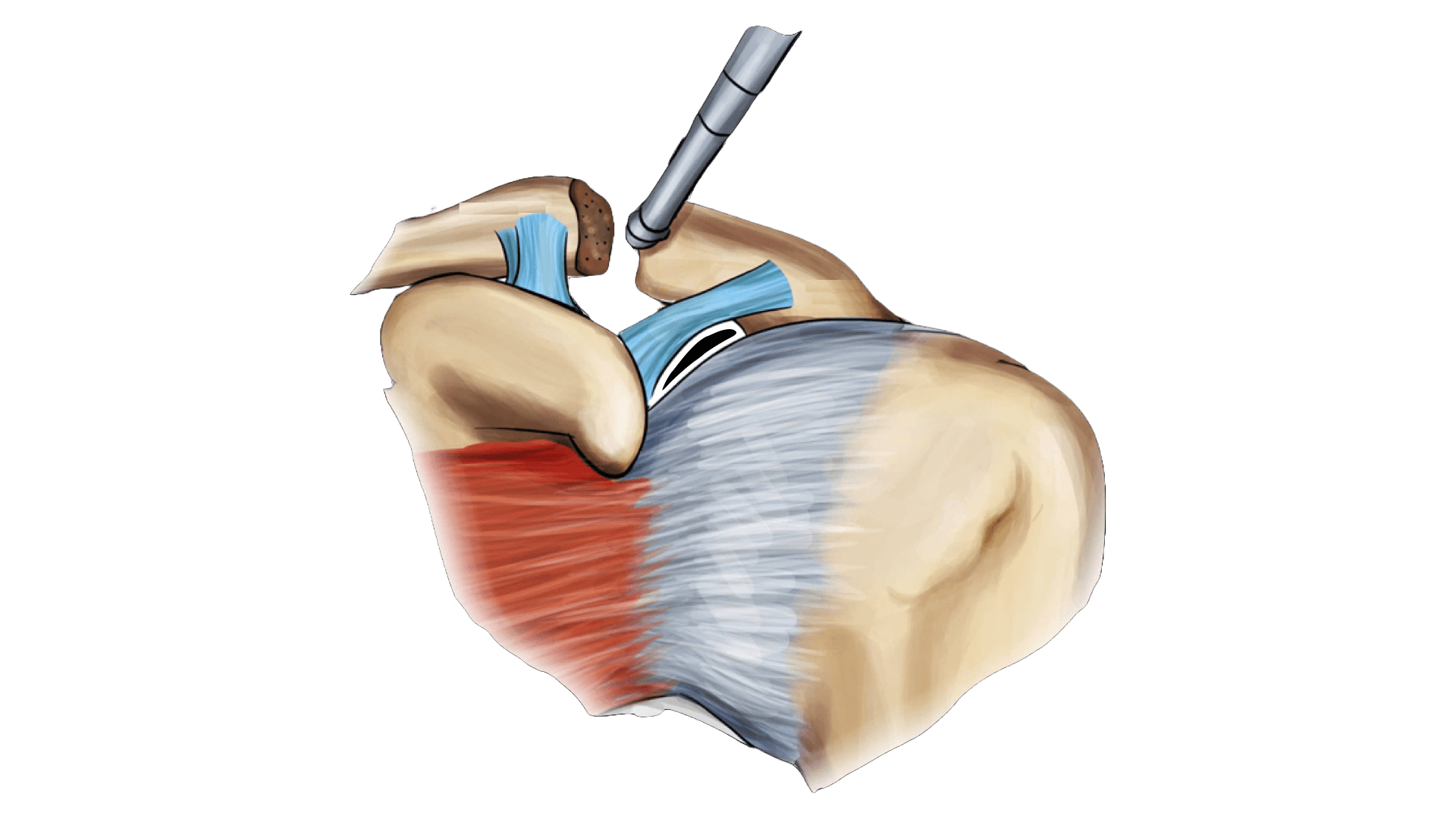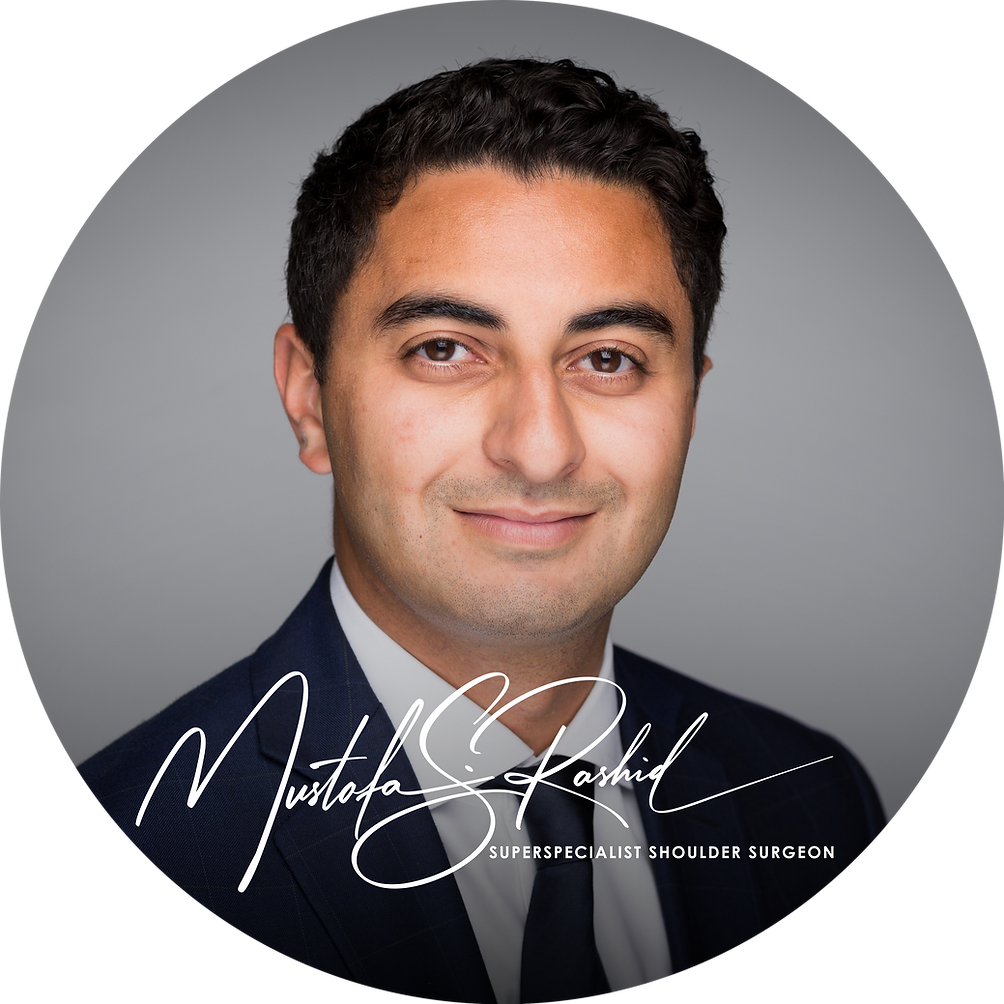AC Joint Arthritis Surgery

Overview
Arthritis in the AC joint is a very common and occasionally painful condition affecting the shoulder. Nearly everyone has features of arthritis of the AC joint on x-rays, but Dr. Rashid will carefully assess your shoulder to determine if it is the true cause of your pain. Surgery is performed using keyhole surgery techniques and simply involves using a high speed burr to remove some bone (around 5mm) to make more space for the joint. It is one of the safest operations in the shoulder.
Indications for Surgery
Surgery is reserved for patients with pain specifically arising from the arthritis AC joint, that has not settled with injections and physiotherapy. Occasionally, surgery to this joint is performed in association with another keyhole surgery procedure, such as rotator cuff tendon repair.
Pre-Surgery Tests and Assessment
Before any keyhole surgery to the shoulder, a variety of assessments and tests, such as X-rays, and a MRI scan are performed. Dr. Rashid will assess how much bone is needed to be removed carefully. Occasionally, a tendon tear is also associated with the arthritic AC joint, and Dr. Rashid will discuss with you how this may be repaired.
Procedure Details
Under general anaesthesia, you will be positioned onto your side and your arm will be placed in a special arm holder. After sterilising the skin with a cleaning solution, a keyhole camera is inserted into your shoulder. The AC joint is located and the bony spurs are burred away to gain access to the joint. Then, approximately 5mm of bone from the end of your collarbone (the part that makes up half the AC joint), is removed. After removing this small amount of bone, Dr. Rashid will then reassess the space within the AC joint. The skin incisions are closed with stitches that are absorbable and buried under the skin. Dressings and a sling are then applied. This type of surgery typically takes less than one hour.
Risks and Complications
The risks of AC joint arthritis surgery are not common. These include infection, stiffness, instability of the joint, pain, and nerve injury (very rare). Dr. Rashid has carefully trained over many years to perform this operation and can do so safely and effectively.
Recovery and Rehabilitation
Recovery following this type of surgery involves discarding your sling as soon as you are comfortable (usually in the first few days), and commencing early movement and stretching exercises to maintain your range of motion. If a repair of the tendon is performed, then Dr. Rashid will outline a protocol for rehabilitation that may include a few weeks in the sling at the beginning. Physiotherapy is helpful to ensure you regain your motion, function, and strength of the shoulder. Pain relief is often appreciated in the first month.
Expected Outcomes
Most people choose this surgery to gain quick results and return to normal activities. It is always best to avoid surgery where possible, and Dr. Rashid will typically offer you a guided injection of steroid into the AC joint, which often can relieve the pain. Arthritis of the AC joint can often “burn itself out” and stop being painful with time, so there is benefit in not rushing into surgery.
Most people are able to return to tennis, golf, swimming, weightlifting, and physical labour between 1 and 3 months after surgery. Dr. Rashid will follow your progress closely to ensure that your shoulder is rehabilitating well over time. Most people can return to work, including driving with 2 weeks. Most people will successfully return to full movement and function within a short amount of time (typically 3 months). This is mostly determined by how well you do your stretching and physical therapy exercises after surgery.
About the Author

Mustafa Rashid
Dr. Mustafa Rashid is an award-winning, well published superspecialised surgeon from the UK, specialising in shoulders
